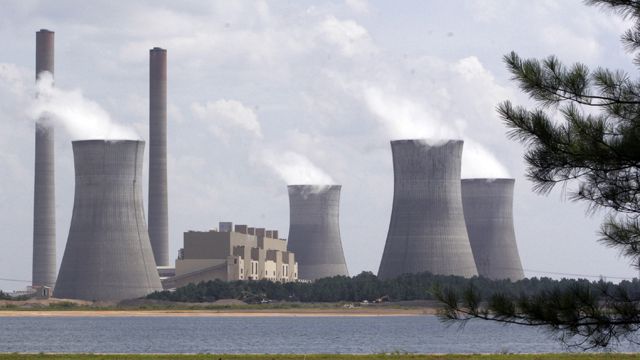
Our energy comes from 6,000 power plants which together produce about 40 percent of the country’s carbon dioxide emissions, the main greenhouse gas driving climate change. But a handful of very large, very dirty plants are responsible for a disproportionate share of the problem.
A new report from two think tanks — the Frontier Group and the Environment America Research & Policy Center — takes a look at this small group of heavy polluters. The researchers found that the 50 dirtiest power plants in the U.S. are responsible for 30 percent of the energy industry’s CO2 emissions, and a full two percent of all emissions worldwide — these 50 plants were responsible for more climate change than all but six countries in the world.
The top 100 dirtiest plants in America produce 3.2 percent of the world’s carbon emissions — or roughly the same amount as all passenger vehicles in the U.S.
Ninety-eight of the top 100 plants burn coal — the other two use natural gas — and currently there aren’t any standardized limits on the amount of emissions these plants spew out. But that looks likely to change. In 2012, the EPA issued standards for new power plants, and in his June climate speech, Obama directed the agency to update and reissue those standards and to develop standards for already operating plants. For large power plants, the EPA proposed a restriction of 1,000 pounds of CO2 emissions per megawatt-hour of electricity produced, a standard that natural gas power plants could meet, but that would require many coal plants to cut their emissions by half, and some by two-thirds.
To the coal industry’s chagrin, those rules are in the works now, with revised regulations for new power plants expected this week. Coal power plants will be regulated across the board in the same way that other potentially heavy polluters — e.g., landfills and sulfuric acid manufacturers — currently are, and many of the dirtiest plants in America will have to cut emissions significantly. Gas power plants may face even stricter regulations.
Do you live near one of these very heavy polluters? We mapped them — take a look. Mouse over each for more information, and use the tools on the top left of the map to zoom.


